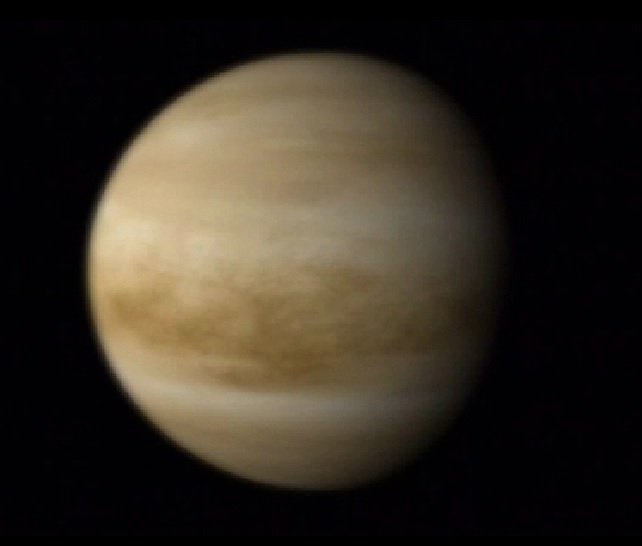
Today Venus is a hellish planet with a crushingly dense atmosphere of carbon dioxide, but billions of years ago, it could have had habitable surface temperatures and a watery ocean.
That’s the conclusion drawn from a fresh round of climate modeling conducted by scientists at NASA’s Goddard Institute for Space Studies in New York. The analysis was published this week in Geophysical Research Letters.
The computer modeling wound the clock back on Venus’ climate, using calculations similar to those employed to wind the clock forward for our own planet’s climate.
“Many of the same tools we use to model climate change on Earth can be adapted to study climates on other planets, both past and present,” lead study author Michael Way, a researcher at the Goddard Institute, said in a NASA news release. “These results show ancient Venus may have been a very different place than it is today.”
Thanks to a runaway greenhouse effect, Venus’ current surface temperatures can reach 864 degrees Fahrenheit. The planet is covered with thick clouds of sulfuric acid, and the robotic probes that made it to the surface have lasted for only a couple of hours at the most.
Venus is just a little bit smaller than Earth, but orbits closer to the sun and thus receives significantly more sunlight. It also rotates far more slowly: One day on Venus lasts 117 Earth days.
These differences led scientists to assume that Venus lost its surface water to evaporation soon after its formation. The water vapor molecules were broken apart by the sun’s ultraviolet glare, and the hydrogen escaped to space. That resulted in the buildup of carbon dioxide and a stifling greenhouse effect.
Previous climate models assumed that ancient Venus had to have a super-dense atmosphere, like the one it has today, in order to explain its slow rotation rate. But recent research has shown that the atmosphere could once have been as thin as Earth’s.
Way and his colleagues worked that scenario into their updated model. They assumed that Venus’ ancient ocean was not as big as Earth’s – which would slow the progress of the greenhouse effect. They also assumed that the ancient sun was up to 30 percent dimmer than it is today.
All those factors are consistent with scientists’ current understanding of Venus and the solar system. And when the researchers ran the climate modeling software, they found that Venus could have been habitable for up to 2 billion years of its early history before the greenhouse effect took deadly hold.

“In the GISS model’s simulation, Venus’ slow spin exposes its dayside to the sun for almost two months at a time,” said study co-author Anthony Del Genio, a climate researcher at the Goddard Institute. “This warms the surface and produces rain that creates a thick layer of clouds, which acts like an umbrella to shield the surface from much of the solar heating. The result is mean climate temperatures that are actually a few degrees cooler than Earth’s today.”
The greenhouse effect eventually caught up with Venus, but the new model suggests that process took more time than previously thought – potentially providing a wider window for life to arise.
It’s unlikely that anything is alive on Venus today. Astrobiologists say the best bet is to look for acid-loving microbes drifting in Venus’ upper atmosphere. In any case, the idea that Venus was once livable brings the planet’s cautionary tale full circle: Back in the 1970s, observations of Venus’ greenhouse effect heightened scientists’ concerns about carbon dioxide emissions here on Earth.
“The surface environment of Venus is a warning,” the late astronomer Carl Sagan wrote. “Something disastrous can happen to a planet rather like our own.”
In addition to Way and Del Genio, the authors of “Was Venus the First Habitable World of Our Solar System?” include Nancy Kiang, Linda Sohl, David Grinspoon, Igor Aleinov, Maxwell Kelley and Thomas Clune.
Source : www.geekwire.com